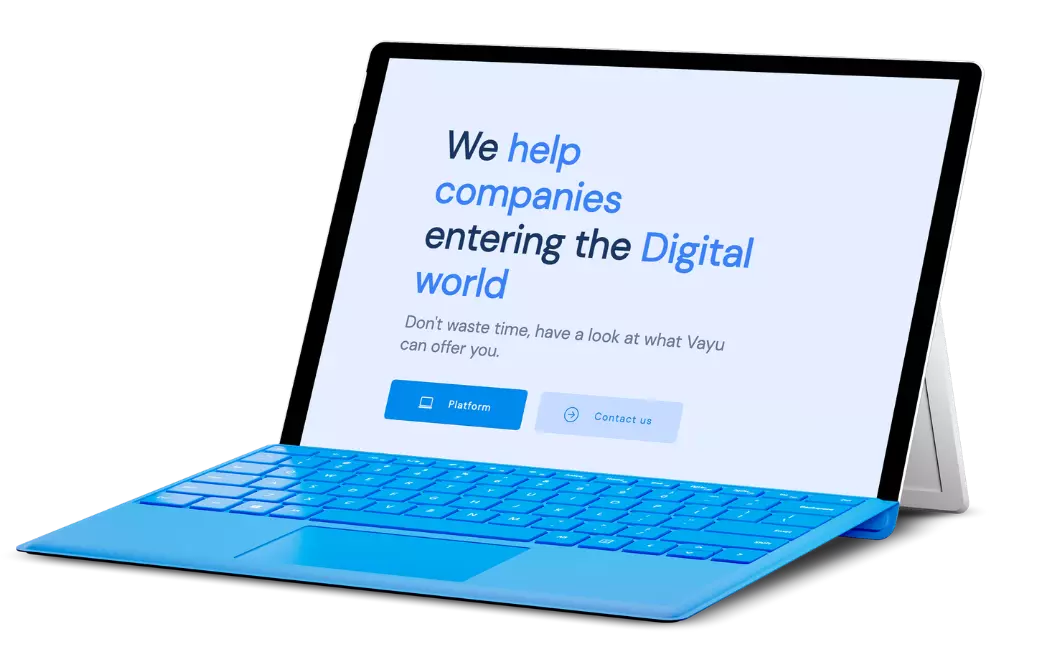Low-code is the future of software development?
Gartner predicts that by 2024, 65 percent of all companies will be developing using low-code. The future of software development is low-code platforms. And, the numbers in fact are high!
“In 2021, 84% of enterprises have turned toward low-code for its ability to reduce strain on IT resources, increase speed-to-market, and involve the business in digital asset development”.(Source: G2 Low-code development statistics)
What is a low code platform?
A low-code platform can be described as one that provides high speed and smoothness in developing applications, it is made simple. It requires little to no coding and no longer advanced knowledge of the language of code.
Thanks to its UI intuitiveness -- it can enable many people outside the field of IT to take charge, simplifying common development tasks and boosting productiveness.
It is certainly a quick and easier alternative to traditional "hand-coding" -- the low-code platform gives the chance to create applications of a high variety via a visual drag-and-drop to meet the growing demands of the market.
Features such as drag & drop, intuitive workflow, and visual guidance through all processes allow you to build applications using visual approaches and templates rather than developing using code.
Traditional coding differs in many ways from low-code technology.
Let's take a closer look at what has changed!
Progress has led to a platform that mutates what we think of as software coding.
There is a difference in the functionalities of both technologies:
While on the one hand, traditional software programming provides numerous tools for the development of complex applications, on the other hand, the innovative low-code platform may provide fewer tools but it enables effortless application development. The first progress of the low-code is to reduce the "hand-coding" and increase the amount of code reused and apps developed.
Here, with plenty of intuitive techniques, you can say goodbye to conventional software development.
The quality provided by the two types of platforms is:
On the side of traditional software programming , it is compromised by the high bug frequency due to the difficulties involved in customizing the platform. Whereas on the low-code side, quality is not affected by bug problems, far from it.
Through a low-code platform, the versatility in creating new applications is even sharper due to its easy features (e.g. drag & drop interface -- one of the most valuable features that simplifies the production process) while "hand-coding" is less flexible and time-consuming to build as well as to learn.
Besides, it is much easier to maintain a platform based on low-code technology when it is managed and used by the people who own it.
“In 2021, 29 percent of respondents from a global survey indicated that low-code development is between 40 and 60 percent faster than traditional development.” (Source: https://www.statista.com/ )
The rise of low code and citizen developers
Low-code technology is becoming increasingly popular as its effectiveness helps companies stay up-to-date with the ever-present changes in business environments and helps, as mentioned above, develop and deliver quality applications in less time.
What do citizen developers have to do with it and who are they?
A citizen developer is an employee who creates application capabilities for consumption by themselves or others, using tools that are not actively forbidden by IT or business units. A citizen developer is a persona, not a title or targeted role. They report to a business unit or function other than IT. (Source: Gartner IT Glossary ).
A Citizen Developer is not a professional developer, but a user who has the technical understanding to solve the requirements demanded of them.
Low-code technology is becoming increasingly popular as its effectiveness helps companies stay up-to-date with the ever-present changes in business environments and helps, as mentioned above, develop and deliver quality applications in less time.
Where does Citizen Development fit in?
Project managers figures are expected to understand the needs and requirements of their teams as well as help and facilitate their work process. They are increasingly taking on the role of citizen developers, as a low-code platform allows them to create applications from pre-programmed modules and use drag-and-drop platforms to develop applications that are best suited to their team's needs.
Citizen development can lead to the development of successful applications that meet the particular needs of teams without experienced developers and without excessive wasted time.
As mentioned: a low-code platform requires little or no coding.
By 2024, 80% of technology products and services will be built by those who are not technology professionals, according to Gartner, Inc.
In a nutshell,
Low-code platforms have been using visual and declarative techniques instead of traditional programming lines. Low-code platforms are right for those who repeatedly need to rapidly develop software or apps for new applications or change features at shorter intervals.
Countless applications can be created quickly without losing quality via a low-code platform! Applications are now built using graphical interfaces , starting with pre-programmed modules, which are interconnected using inputs such as functions, arrows, and checkboxes.
The company will benefit!
The running of day-to-day business processes as well as the speed at which they take place will benefit. > More space is given to quality without significant time consumption.
Low-code will transform the realm of software development by giving developers the ability to choose when and where they want to spend their time "hand-coding". With low code, developers can build less and architect more. As more developers adopt low code, the industry will change in big and unpredictable ways.
It is a leading technology for today's companies. Developers can now create prototypes in a few days thanks to the automation of many complex processes as well as the ease of interconnecting different systems and different IT landscapes. Not only can the company's systems benefit, but the customer will also be satisfied with the resulting quality.
